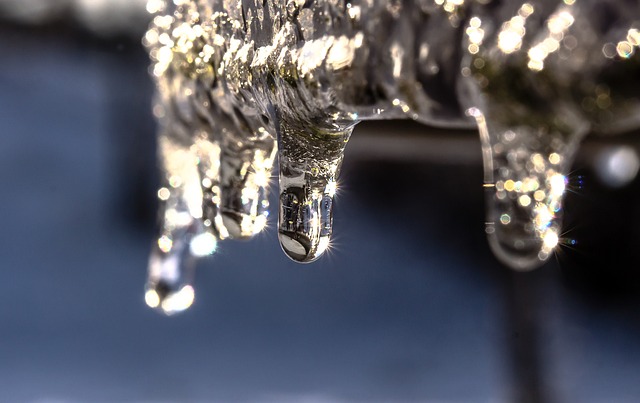Frozen pipes cause significant damage, disrupt operations, and lead to costly repairs. To prevent this, understand that water expansion from freezing exerts pressure on pipe walls. Key strategies include thorough insulation of plumbing systems, especially in exterior walls and crawl spaces, using heat tape or thermal insulation around exposed pipes, regular leak checks, and running tap water slightly throughout the day in prone areas. If pipes freeze, take immediate action: increase indoor heat, close main water shut-off valve, gently warm pipes with hot towels or a hairdryer, and insulate exposed pipes with heat-reflective material or pre-fitted insulation for future protection. Following these steps helps avoid costly repairs and maintains a robust plumbing system during cold weather.
Winter’s arrival can bring a host of plumbing woes, with frozen pipes being one of the most common. But don’t let freezing temperatures catch you off guard! This article equips you with a comprehensive guide to prevent and handle frozen pipes. We’ll delve into the science behind pipe freezing and offer 7 practical strategies, from understanding insulation to quick fix solutions, ensuring your pipes stay untainted by frosty surprises. Learn how to proactively keep your plumbing running smoothly all winter long.
- Understanding Pipe Freezing: The Science Behind It
- Proactive Measures to Keep Pipes Piping Hot
- Quick Action Steps When Pipes Do Freeze
Understanding Pipe Freezing: The Science Behind It

Frozen pipes are a common wintertime nuisance, leading to costly damage and inconvenient disruptions. But understanding the science behind pipe freezing empowers us to take proactive measures. When water within pipes is exposed to temperatures below its freezing point (32°F or 0°C), it expands as it turns from liquid to solid. This expansion exerts pressure on the pipe walls, potentially causing them to burst or leak. The rate of freezing and subsequent damage depends on several factors, including the type of piping material, insulation, temperature drop, and water flow within the pipes. By learning how and why pipes freeze, we can implement effective strategies to prevent this wintertime dilemma, ensuring the integrity of our plumbing systems.
To effectively combat frozen pipes, it’s essential to know that insulation plays a pivotal role. Adequate insulation acts as a barrier, slowing down heat loss from the pipe and keeping water within a safer temperature range. Additionally, maintaining proper heating in spaces where pipes are vulnerable to extreme cold is crucial. How to prevent frozen pipes involves a combination of strategic insulation placement, regular maintenance checks, and efficient heating systems.
Proactive Measures to Keep Pipes Piping Hot

To prevent frozen pipes, taking proactive measures is key. First, insulate your home’s plumbing system thoroughly, focusing on areas most susceptible to temperature drops, such as exterior walls and crawl spaces. This simple step acts as a protective shield, keeping heat in and cold out. Additionally, consider using heat tape or thermal insulation around pipes exposed to cold, like those in attics or basements.
Regularly checking your home’s plumbing for any leaks is another effective strategy. Even small drips can lead to significant water damage and increase the risk of freezing. Addressing leaks promptly prevents unnecessary stress on your pipes during colder months. Lastly, let tap water run slightly throughout the day, especially in areas prone to freezing. This continuous movement keeps water circulating, reducing the chances of it solidifying within the pipes.
Quick Action Steps When Pipes Do Freeze

If pipes do freeze, quick action is crucial. First, try turning up the heat in your home—even a slight increase can help prevent further freezing. Next, locate the main shut-off valve for your water supply and close it to stop water flow, minimizing damage. Then, use hot towels or a hairdryer to gently warm the frozen pipes from both ends, applying direct heat until ice melts.
Don’t forget to insulate exposed pipes with heat-reflective material or pre-fitted pipe insulation to prevent future freezing. These simple steps can save you from costly repairs and ensure your plumbing system remains intact during cold snaps.
Protecting your pipes from freezing is crucial for maintaining a comfortable home and avoiding costly damages. By understanding the science behind pipe freezing, taking proactive measures, and knowing quick action steps, you can keep your pipes piping hot all year round. Implement these 7 ways to prevent frozen pipes and rest easy, knowing your home is prepared for winter’s worst.
